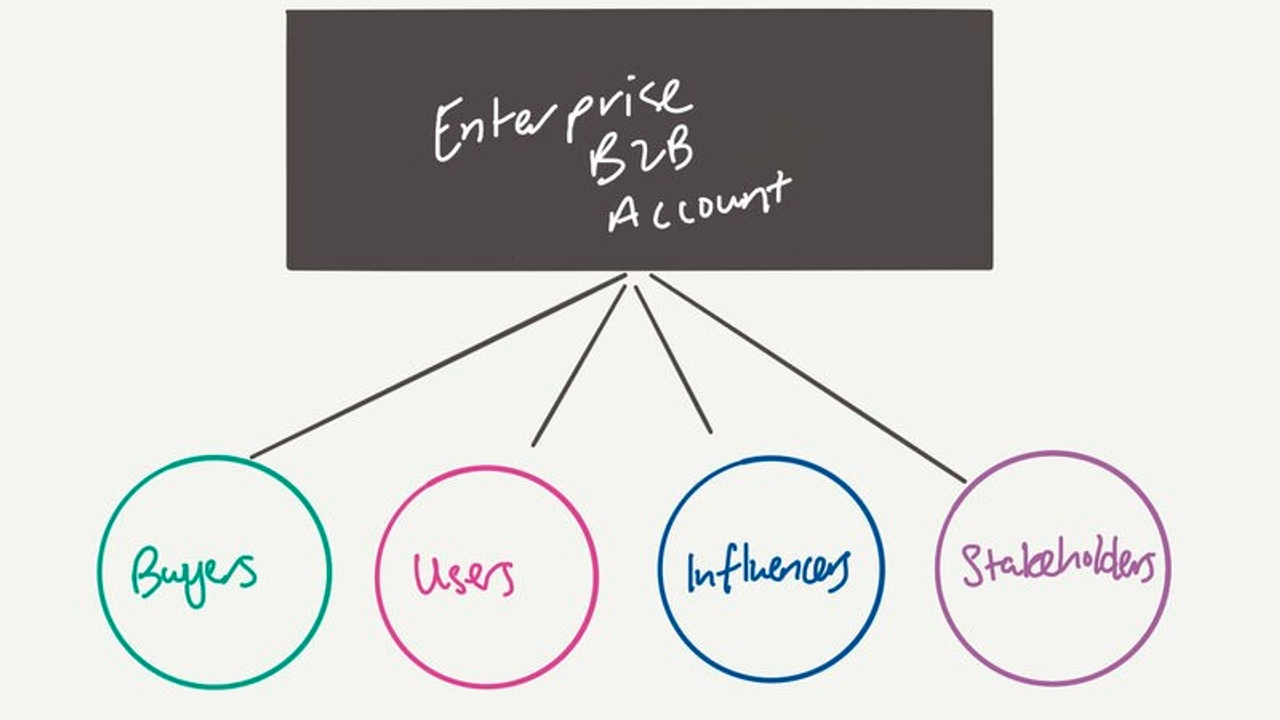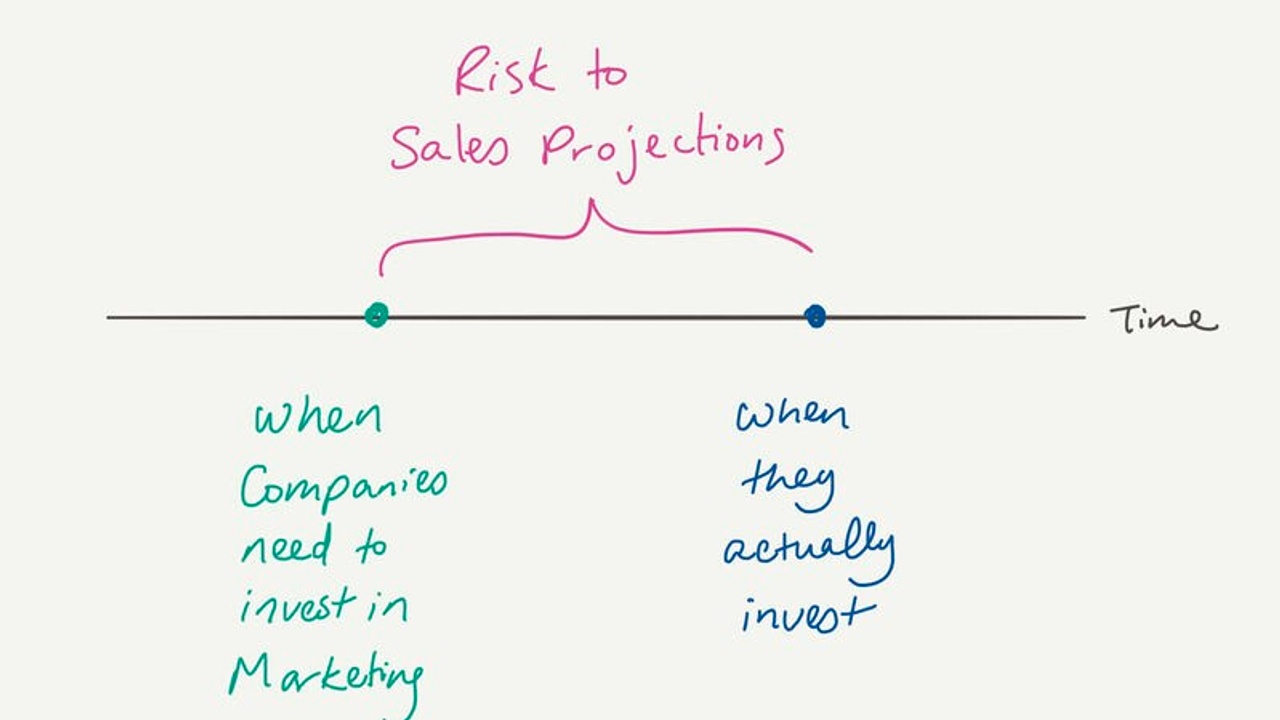Lead Scoring vs Journey Mapping

Lead scoring is the opposite of how customers want to be treated.
Under a lead scoring model, you try to equate a series of actions into the same level of intent as someone who announces that intent overtly.
But a blog post + webinar + email open does not equal a demo request.
Lead scoring is unnecessarily interruptive. Often, it means introducing a sales rep when the buyer is not ready to talk to have a sales conversation.
Instead, companies would be far better served to add content and educational assets to nurture prospects to help them self-announce their intent for a sales conversation.
This means:
- Having great top of funnel content to educate the prospect, even if it has nothing to do with your product
- Having great resources for them to interact with so you stay top of mind with them
- Having problem-aware content that helps them understand their options to solving their problems
- Having solution-aware content that helps them become develop a clear understanding of ...
Functional Strategy Comes From Company Strategy

Too many teams / sub-functions think of their work in isolation. This leads to siloed and dysfunctional organizations.
Your content strategy needs to be a subset of your overall marketing strategy, which needs to be a subset of your overall growth strategy, which needs to be a subset of the overall company strategy.
This is why starting from the company strategy / outlook / plans is the best way to ensure the success of your function as a leader and increase your impact across the organization.
Ask questions like:
1) What are our revenue targets? How fast do we need to grow?
2) What are our financial constraints? (Burn rate, EBITDA etc.)
3) What growth opportunities are the biggest focus for us as an organization? (New logos? Expansion? M&A? Pricing? New products?)
4) What is required from all the key teams (product, marketing, sales, CS, ops) to deliver on our biggest opportunities?
5) How can our respective function contribute to what is required?
Thinking like this changes how a fu...
Bottom-Up Enterprise B2B GTM

Taking a top-down approach to Enterprise B2B accounts limits possibilities on Go-To-Market because TAM is often limited to a small set of very valuable accounts.
You need to expend incredible amounts of acquisition dollars to land a $100K-$1M+ deals. Often this work is led by Sales since 1 to 1 outreach is required.
Marketing ends up focusing on ABM to drive demand by Marketing supporting the 1 to 1 outreach with 1 to 1 content and messaging.
While this is what is required in a lot of cases, the problem of limited TAM can be solved by expanding the universe of people who actually drive decision-making for an enterprise account.
This means:
1) Marketing to Buyers, Users, Influencers and Stakeholders of your solution so that a far larger audience can then be targeted to drive demand more efficiently.
2) Building a product that can be adopted by individual users who can collectively influence the buying decision of the overall enterprise organization
3) Targeting individual users v...
Growing Your Brand vs Rebranding

Rebranding is more expensive than companies and their marketing teams realize.
Every year, Marketing teams invest hundreds of thousands of dollars into changing the brand, logo, website, tagline etc. for companies that likely don’t need the change to begin with.
Along the way, political capital is wasted, VPs of Marketing get fired and current brand equity is squandered.
Most importantly, revenue does not go up.
The bigger the company, the more the waste. E.g. A Fortune 500 company doing a rebrand can cost millions of dollars in new marketing collateral, website changes, building signs, retraining of sales teams etc.
At the same time, smaller companies doing rebrands can waste limited resources on a rebrand that doesn’t meet the ultimate goal of driving growth.
Reasons cited for these brand overhauls include:
-Increased M&A activity and needing to tell a bigger story
-Current branding not matching what the company really does / offers
-Needing to differentiate from compet...
Marketing Generated Pipeline Maturity

Most B2B companies find themselves over-relying on Sales to generate the bulk of their pipeline.
In such companies, Marketing doesn't have enough budget and does not provide nearly enough coverage to drive revenue.
These are the companies where cold calling, events, relationships are what grow the business. These are also often the companies where Sales reps miss quota more often than not.
The key is to get Marketing Generated Pipeline into a healthy range (at least at 30%). In some cases, this number can be as high as 70-80%.
That's how you know the market is actually coming to you inbound when it needs a specific pain point to be solved. They're aware of you, they've read your content, they trust you as an authority and resource.
It's also how you know that your brand has enough value in the marketplace to win business that does not depend on you dialling to dollars to succeed.
Customers Lead Content and Demand Gen

Marketers who over-index on SEO or Paid Search often (incorrectly) rely on “search volumes” and “keyword difficulty” as their guides on what to prioritize.
This leads to companies fighting for market share like a commodity, inevitably inflating CAC and Payback Period metrics.
Instead, starting with Differentiation as the goal changes how you Go-To-Market:
- You invest heavily into understanding market dynamics and customer pain points
- You build a strategic narrative to educate the market on how to resolve those pain points while separating yourself from the noise
- You create content to educate buyers on the strategic narrative at every stage of their journey
- You leverage demand generation channels and campaigns to scale distribution of the content to your ideal buyers
This approach focuses on the customers and the message, not search volumes or keyword difficulty.
It brings down CAC and improves your Payback Period.
It also opens up infinite scale because you can take th...
Marketing Team Superstars vs. Average Contributors

Companies often try to solve problems without investing enough into hiring, onboarding and nurturing talented team members.
In such companies, salaries are capped and growth is limited. Employees end up playing musical chairs until they eventually decide to leave the company and a new batch joins to replace.
These companies have high-control (and often political) environments, with more oversight and less freedom to emerge as a valuable contributor.
In contrast, companies that realize that talent is everything prioritize hiring the best of the best and are also willing to invest significantly more in those A-players. This includes higher compensation, more freedom to operate, better support and more resources.
These companies end up significantly increasing their likelihood of success because they realize the most essential truth of building winning teams: 1 Superstar is worth just as much (if not more) than 5 average contributors.
They build around Who before they focus on What.
...Tech Stack vs. CMO Tenure
There is an inherent mismatch between implementing new technology into your Marketing stack and how much time you have as a Marketing leader.
While the latest ABM or Attribution or Content (etc.) platform may sound like a phenomenal idea, it is more than likely setting up Marketing leaders everywhere to fail in the long run.
Reason? Tech stack implementations take a lot of time, effort and energy to sort through. Meanwhile, sales targets still need to be hit and not enough pipeline is being generated.
These Marketing leaders find themselves in board meetings a couple of quarters in a row talking about the new programs they are "going to launch" once the platform is live.
Over time, this erodes trust with CEOs and Boards until eventually a change is made.
Instead, Marketing would be much better served focusing on executing plays that generate pipeline and revenue as a starting point to build enough political capital that buys them time to implement a new technology in the first p...
Marketing Accountability Metrics

Too many marketers spend time defending Marketing efforts and their impact on the business when asked about their contribution.
This is where conversations shift to:
- How many badges were scanned at a conference
- How many registrations and attendees a webinar has
- How many contacts were uploaded and contacted via cold outreach
- How many views and impressions the blog / videos / other content had
- How much pipeline was influenced that the sales team ultimately closed
Discussing the above overlooks an important truth: none of it matters if there is no revenue to show for it.
This is why mature marketers focus their efforts on being revenue accountable. They talk about:
- Marketing-Sourced Pipeline
- Closed Won Revenue
- ROI
- CAC
- Payback Period
These are scary metrics to hold yourself accountable to, but doing so shows maturity, experience and capability.
It also builds incredible amounts of trust with your CEO and board because you are aligned with them on expectati...
Delayed Marketing Investment

There is often a gap between when companies need to invest in Marketing and when they actually do it. This puts Sales projections at significant risk.
If you need a certain amount of Marketing support to hit your projections for the year, that investment needs to be made likely in the previous year so that buyers have enough time to make it through their sales cycle.
That means, if you start scaling up your marketing spend end of Q1 / mid-Q2, you're already quite likely to miss your targets.
This includes doing the following ahead of time:
1. Hiring people: A hire made in Q1 won't be fully ramped up to contribute till Q2 at the very least. An open job posting in Q1 is even further out from contribution.
2. Ramping up ad spend: More deals means more MQLs need to be produced, which likely means Ad Spend should have been ramped up a long time ago.
3. Scaling content production: More content to generate demand likely requires a content roadmap to be in place months before, with a tea...




